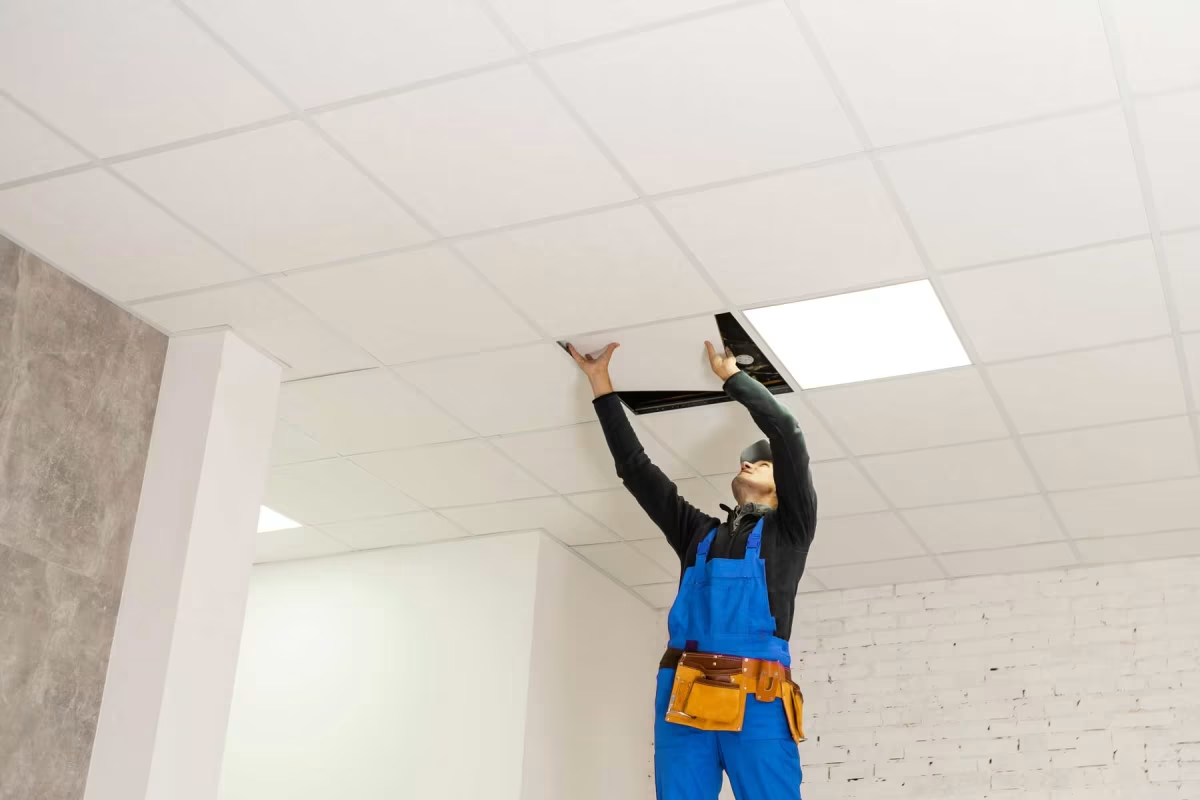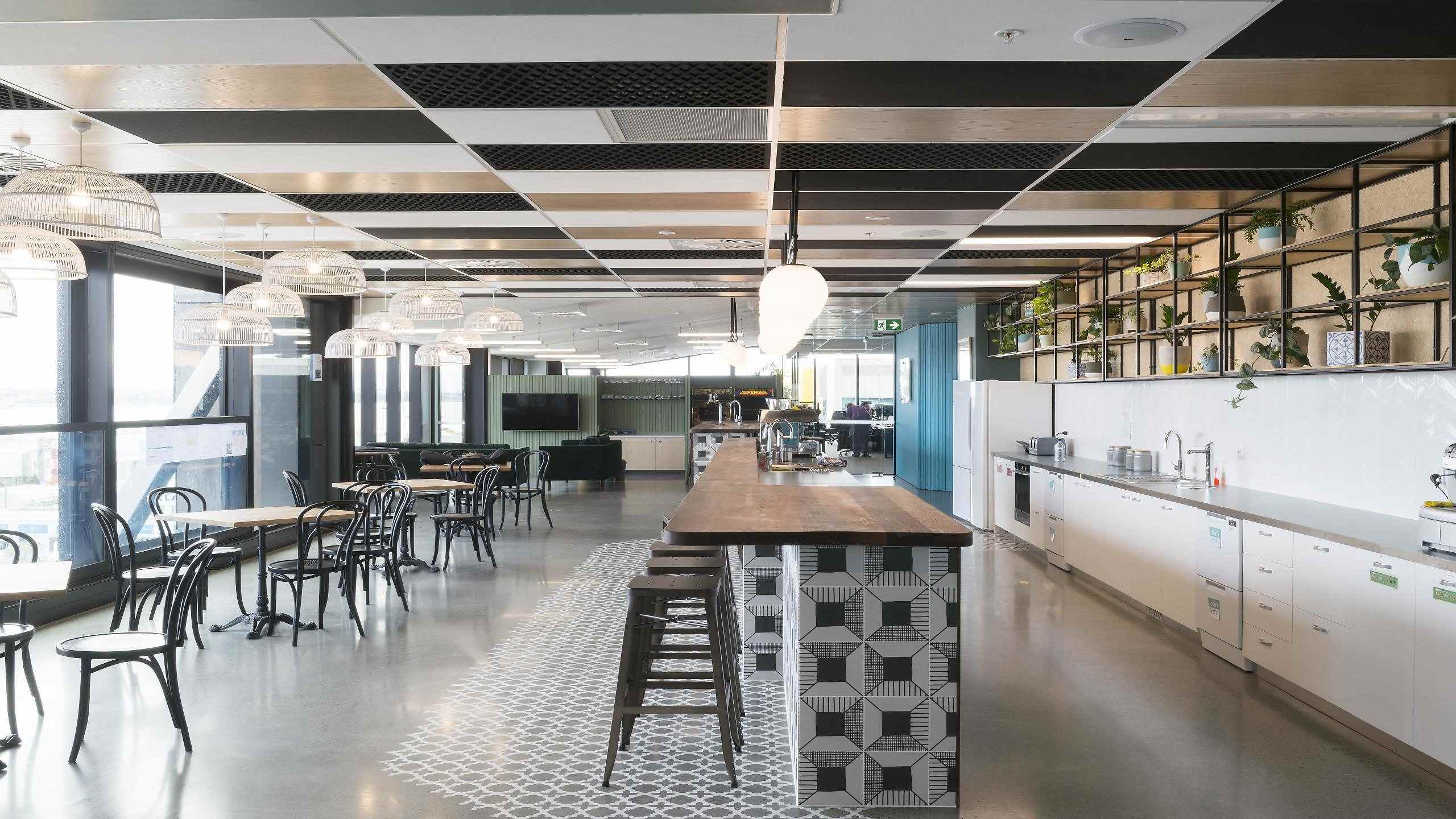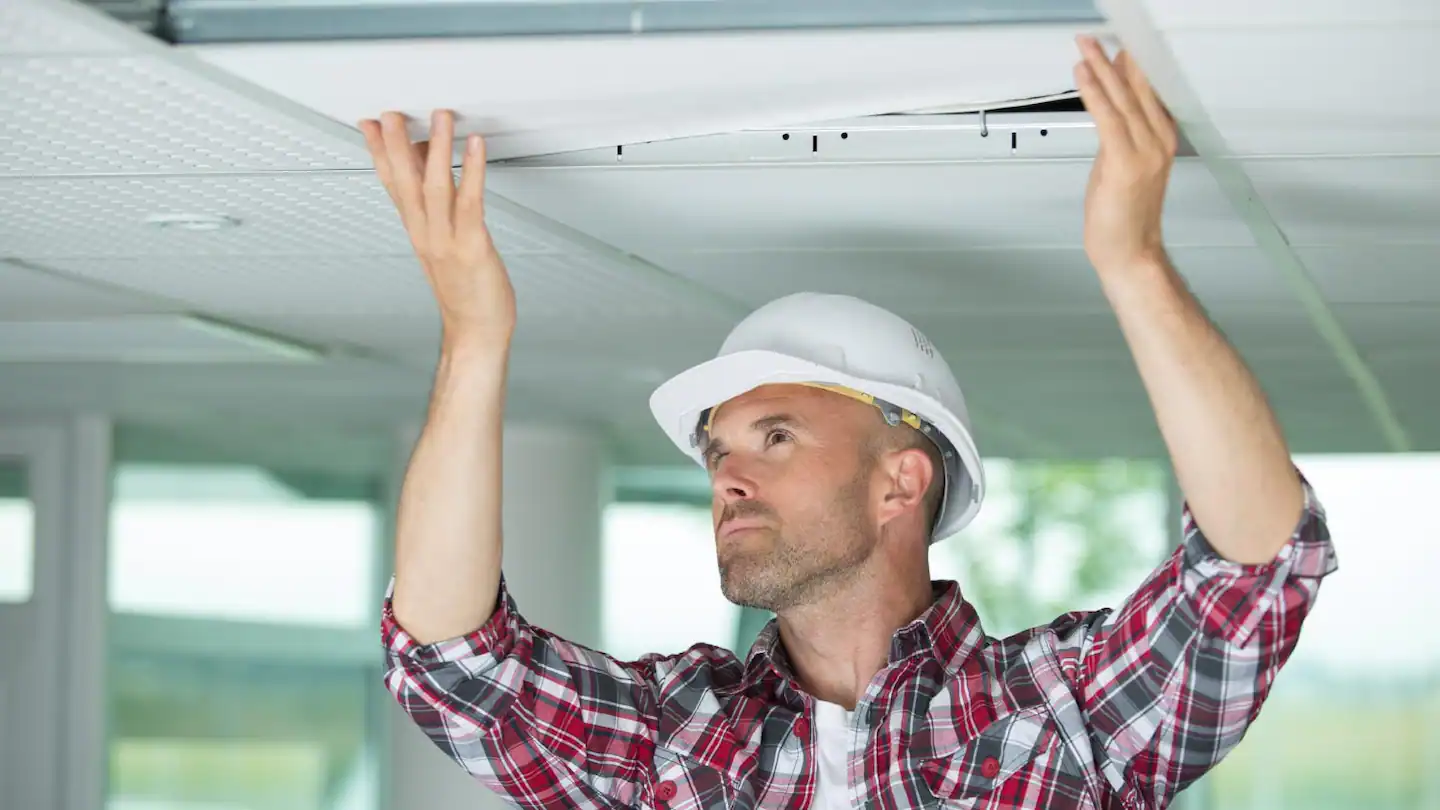PRANCE metalwork is a leading manufacturer of metal ceiling and facade systems.
8 Essential Drop Ceiling Parts You Need for a Hassle-Free Installation
Knowing the right parts will assist you in how to install a drop ceiling and reduce cost, time, and frustration. Offices, hotels, and shops require drop ceiling parts to be installed most often because they are not only practical but attractive and easily cleaned as well. To have a flawless installation, though, one must know the function of every component and how they fit together. Whether you're renovating an existing ceiling or designing a new one, this thorough guide will help you find the eight key drop ceiling components ensuring a hassle-free approach.
Key Components of Drop Ceiling Parts
A complete drop ceiling system is made up of several core parts that ensure stability, function, and appearance:
- Main Tees: The primary structural bars that form the main framework of the ceiling grid.
- Cross Tees: Connect to the main tees to create a strong, evenly spaced grid pattern.
- Wall Angles: Installed along the room’s perimeter to support and align the grid system.
- Ceiling Panels/Tiles: The visible surface of drop ceiling panels, available in various textures, colors, and finishes.
- Suspension Wires: Secure the grid to the structural ceiling above, maintaining height and balance.
- Access Panels: Allow easy maintenance of utilities hidden above the ceiling.
- Lighting Fixtures & Air Diffusers: Integrate directly into the grid for efficient illumination and air circulation.
Why Knowing Drop Ceiling Parts Ensures a Smooth, Durable Installation
Understanding drop ceiling parts is the basis for a good project, not only a technicality. Every component helps to guarantee that the ceiling looks wonderful, performs as expected, and lasts for years.
1. Stability and Safety
Every component of the drop ceiling system adds to the general stability. Selecting appropriate parts helps avoid problems such as structural failure, misalignment, or drooping.
2. Design Flexibility
Whether it's soundproofing for an office or ornamental panels for a hotel lobby, the correct components will enable you to build a drop ceiling that accentuates the functioning of the area and matches its appearance.
Installation Overview Animation
Before diving into each component, a quick installation animation provides an overview of how drop ceiling parts fit together—from attaching hangers and main tees to placing the ceiling panels. This visual guide helps installers and designers understand the process clearly, ensuring a smoother and more efficient setup.
1. Install and Align Main Runners for Maximum Stability
Main runners are the backbone of any drop ceiling system. These long, T-shaped metal strips form the primary framework that supports the entire structure.
Why They're Important?
Structural Support: The main runners support the weight of the cross tees, panels, and any integrated fixtures, such as lights or diffusers.
Alignment: They help keep the grid system straight and evenly spaced.
Practical Tips
- Position the main runners parallel to the longest wall to maximize stability.
- Use corrosion-resistant metals like stainless steel or aluminum to extend lifespan.
- Suspension Wire Spacing: Typically 1.2–1.5 m apart; for ceilings with weights exceeding 25 kg/m², reduce spacing to 0.9 m.
- Maintenance: Check suspension points every 6–12 months to ensure the ceiling remains level and structurally sound. Main runners in well-maintained metal panels can last 25–30 years.
2. Securing Cross Tees: Tips for a Level Drop Ceiling Grid
Cross tees are shorter metal strips that connect to the main runners to form a grid pattern. They create the structure where ceiling panels will be placed.
Why They're Important?
Support: Cross tees provide intermediate support for the panels, distributing their weight evenly.
Customization: Available in various lengths to accommodate different panel sizes, offering design flexibility.
Practical Tips
- Ensure cross tees snap securely into the main runners to prevent misalignment.
- Use corrosion-resistant metals, especially in commercial or humid environments, to enhance durability.
- Spacing & Fastening: Standard spacing between cross tees is 600 mm for typical panels; reduce to 450–500 mm if panels are heavy (>20 kg/m²). Fasten securely at each connection with locking clips.
3. Installing and Maintaining Ceiling Panels for Durability & Style

The most obvious part of the drop ceiling system are ceiling panels. Covering the grid, these tiles have a range of patterns, finishes, and uses.
Why They’re Important?
Aesthetic Appeal: Panels define the look and feel of the space.
Functionality: Options like perforated panels with Rockwool backing can improve acoustics and reduce noise.
Practical Tips
- Panel Size & Placement: Standard panel sizes are 600×600 mm or 600×1200 mm. Ensure edges sit fully within the grid and leave 2–3 mm clearance for thermal expansion.
- Maintenance & Lifespan: Inspect panels every 6–12 months. PVC panels typically last 20 years; metal panels 25–30 years. Replace damaged or warped panels promptly to maintain grid integrity and aesthetics.
- Energy Efficiency: Reflective metal panels can increase lighting efficiency by 5–10%, reducing energy costs.
4. Suspension Wire Layout: Ensure Safe and Level Ceilings
Unsung heroes of drop ceiling systems are suspension wires. Their anchoring of the ceiling grid to the structural ceiling guarantees the whole system remains in place.
Why They’re Important?
Load Distribution: Properly installed wires evenly support the grid and ceiling panels.
Height Adjustment: Wires allow precise leveling of the drop ceiling.
Practical Tips
- Typical Spacing: Standard wire spacing is 1.2–1.5 m. For ceilings heavier than 25 kg/m², reduce spacing to 0.9 m.
- Wire Material: Use high-tensile strength galvanized or stainless steel wires for safety and durability.
- Maintenance & Inspection: Check suspension wires every 6–12 months for tension and corrosion. Replace damaged wires immediately to prevent sagging or grid misalignment.
- Load Guidelines: Ensure combined panel and fixture weight does not exceed manufacturer recommendations for wire gauge.
5. Wall Angles: Achieve a Clean, Professional Edge
Wall angles, also known as perimeter trims, are L-shaped metal pieces attached to the walls. They provide support for the grid at the edges.
Why They’re Important?
Edge Support: Wall angles hold the main runners and cross tees at the perimeter of the ceiling.
Finished Look: They give the ceiling a clean, polished appearance.
Practical Tips
- Installation Height: Position wall angles level with the desired ceiling drop; use a laser level for precision.
- Fastening: Attach with screws every 30–40 cm for stability; use anchors on drywall or masonry walls.
- Match the wall angles’ finish to the rest of the grid for a cohesive design.
- Ensure the angles are level to avoid gaps or uneven edges.
6. Using Splice Plates to Extend Main Runners Safely
Splice plates are small connectors used to join two sections of main runners or cross tees, allowing for extended grid lines.
Why They’re Important?
● Structural Continuity: They maintain the integrity of the grid system when longer lengths are needed.
● Flexibility: Enable customization for larger or irregularly shaped spaces.
Practical Tips
● Securely fasten the splice plates to prevent shifting or misalignment.
● Use the same material as the main runners for consistent durability.
7. Attaching Hangers & Clips: Avoid Sagging and Misalignment
Hangers and clips attach suspension wires to the structural ceiling, ensuring that the grid system stays firmly in place.
Why They’re Important?
Connection Point: These components act as the link between the suspension wires and the grid.
Durability: High-quality clips prevent sagging or detachment over time.
Practical Tips
- Choose clips with anti-corrosion coatings for longer service life.
- Check hangers and clips often throughout the installation to make sure they are firmly secured.
- Wire & Clip Spacing: Standard spacing is 1.2–1.5 m; reduce to 0.9 m for ceilings with panels >25 kg/m².
- Load Capacity: Ensure hangers and clips can handle total panel and fixture weight safely.
8. Integrating Light Fixtures: Perfect Fit and Efficient Illumination
Drop ceiling systems often include lighting, and fixtures or diffusers are made to fit perfectly the grid.
Why They’re Important?
● Illumination: Provide functional and aesthetic lighting tailored to the space’s needs.
● Efficiency: Reflective metallic panels can amplify light, reducing energy costs.
Practical Tips
- Coordinate the size of light fixtures with the grid dimensions for a perfect fit.
- Use diffusers to evenly distribute light and reduce glare in workspaces.
Benefits of Using the Right Drop Ceiling Parts
Investing in the correct drop ceiling parts offers significant advantages beyond just a smooth installation.
1. Durability
One should select a material like stainless steel or aluminum since it is assumed that especially in areas of high traffic the ceiling will not wear off easily.
2. Improved Functionality
With options like acoustic panels and reflective surfaces, the right components enhance the space’s usability.
3. Maintenance Ease
Well-designed systems make it easy to access wiring, HVAC systems, or plumbing hidden above the ceiling.
Common Challenges and Solutions

Even with proper planning, challenges can arise. Here’s how to handle them effectively.
Sagging Ceilings
Weak suspension wires or overloaded panels can cause sagging. Always use high-tensile materials and follow weight guidelines.
Misalignment
Crooked grids disrupt the ceiling’s appearance. Double-check measurements and level the grid during installation.
Limited Accessibility
Some designs make it difficult to access utilities above the ceiling. To address this issue, opt for removable panels.
Applying Drop Ceiling Parts in Commercial Spaces
Understanding how each drop ceiling component performs in different environments helps you choose the right materials and finishes for your project. From acoustics to lighting, each setting benefits from tailored ceiling solutions.
Offices
Acoustic drop ceiling panels with mineral fiber or perforated metal enhance concentration and reduce echo. Integrating LED panel lights within the grid further improves workspace illumination and efficiency.
Retail Stores
Use reflective aluminum or stainless-steel ceiling panels to amplify natural and artificial lighting, highlighting merchandise displays while maintaining a modern look. Decorative trims or diffusers can create visual depth and brand identity.
Hospitality
Decorative drop ceiling panel ideas such as woodgrain or custom-patterned panels add warmth and texture. In dining areas or hotel lobbies, combining acoustic insulation with durable materials ensures comfort and long-term performance.
Conclusion
Understanding and selecting the right drop ceiling parts is the key to a hassle-free installation. From main runners to lighting fixtures, each component plays a crucial role in creating a durable, functional, and visually appealing ceiling. Whether you’re designing an office, hotel, or retail store, these essential parts provide the foundation for success.
Ready to upgrade your commercial space? PRANCE Metalwork Building Material Co. Ltd offers top-quality drop ceiling parts. Contact us today for expert advice and premium products.
FAQs
1. Which material works best for high-humidity environments?
For humid areas like kitchens or basements, PVC or metal drop ceiling panels are the most suitable. PVC panels are 100% waterproof and mold-resistant, while aluminum panels resist corrosion and maintain their shape over time. Avoid mineral fiber panels in high-moisture spaces as they may absorb water and warp.
2. Do acoustic panels really reduce office noise?
Yes. Acoustic drop ceiling panels made from mineral fiber or perforated aluminum can absorb up to 70–85% of sound energy (NRC 0.70–0.85). This reduces echo, improves speech clarity, and creates a quieter work environment—especially beneficial in open-plan offices or meeting rooms.
3. How long do different drop ceiling parts last?
Durability varies by material: PVC panels last around 20 years, metal panels 25–30 years, and acoustic mineral fiber tiles about 10–15 years. Suspension wires and runners can last even longer if corrosion-protected. Regular inspections every 6–12 months help extend lifespan and ensure safety.
4. How can I reduce the installation cost of drop ceiling panels?
To lower expenses, choose lightweight panels for drop ceiling that require fewer suspension wires and simpler grids. Opting for DIY installation can save 15–20%. Buying materials in bulk and using modular light fixtures compatible with standard grid sizes also minimizes labor and customization costs.
5. Are all lighting fixtures compatible with drop ceiling panel grids?
Not always. Drop ceiling panel lights must match the grid’s T-bar size, usually 600×600 mm or 2×2 ft. LED flat panels and diffusers are designed for these standard grids, while heavier fixtures require extra hangers or reinforcement. Always confirm load limits before installation.





















